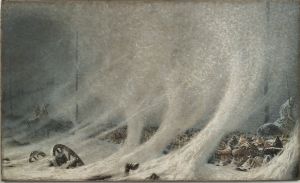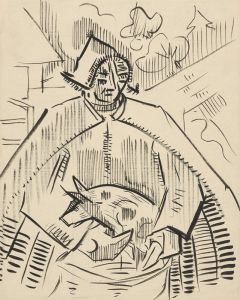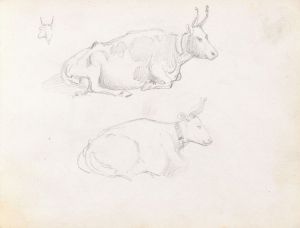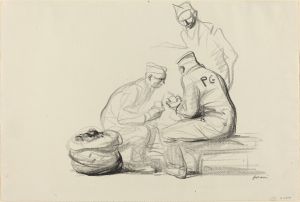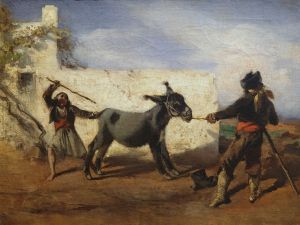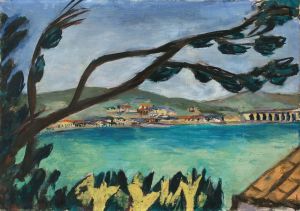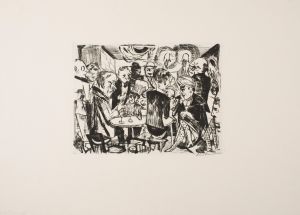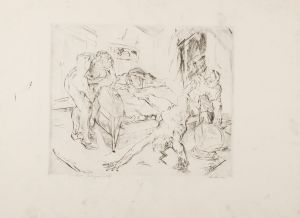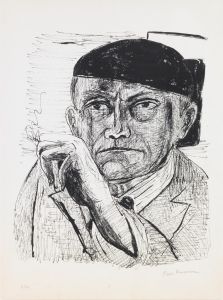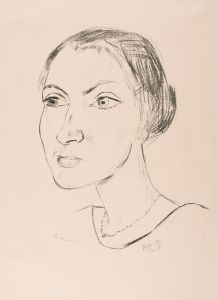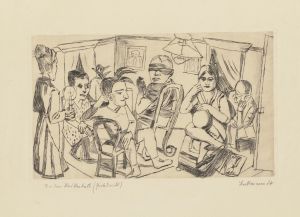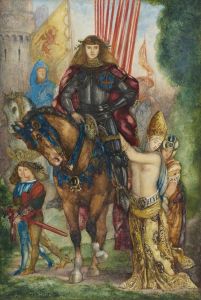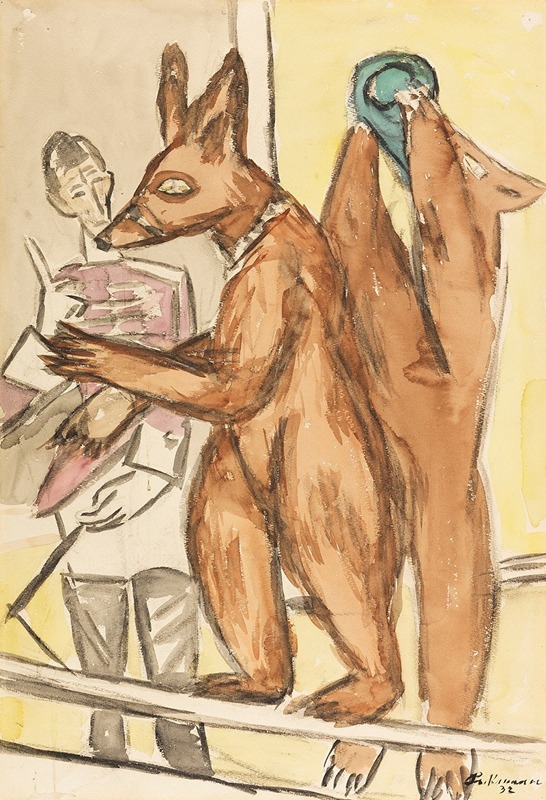
Dressierte Bären
A hand-painted replica of Max Beckmann’s masterpiece Dressierte Bären, meticulously crafted by professional artists to capture the true essence of the original. Each piece is created with museum-quality canvas and rare mineral pigments, carefully painted by experienced artists with delicate brushstrokes and rich, layered colors to perfectly recreate the texture of the original artwork. Unlike machine-printed reproductions, this hand-painted version brings the painting to life, infused with the artist’s emotions and skill in every stroke. Whether for personal collection or home decoration, it instantly elevates the artistic atmosphere of any space.
Max Beckmann's "Dressierte Bären" (translated as "Performing Bears") is a notable work by the German painter, who is recognized as one of the most important artists of the 20th century. Beckmann, born in 1884 in Leipzig, Germany, is often associated with the New Objectivity movement, which emerged in the Weimar Republic as a reaction against expressionism. His works are known for their complex symbolism, bold colors, and dramatic compositions.
"Dressierte Bären" was created during a period when Beckmann was deeply engaged with themes of human experience, often exploring the absurdity and tragedy of life. This painting is a part of Beckmann's broader exploration of circus and carnival motifs, which he frequently used as metaphors for the human condition. The circus, with its performers and spectacles, served as a rich source of inspiration for Beckmann, allowing him to delve into themes of performance, illusion, and reality.
In "Dressierte Bären," Beckmann presents a scene that is both captivating and unsettling. The painting depicts bears that are trained to perform, a common attraction in circuses of the time. However, Beckmann's portrayal goes beyond a simple depiction of a circus act. The bears, often seen as symbols of strength and wildness, are shown in a state of subjugation, performing for an audience. This juxtaposition raises questions about freedom, control, and the nature of entertainment.
Beckmann's use of color and form in "Dressierte Bären" is characteristic of his style. He employs bold, contrasting colors to create a sense of tension and drama. The figures in the painting are rendered with strong, decisive lines, a technique that Beckmann used to convey the intensity of the scene. The composition is carefully structured, guiding the viewer's eye across the canvas and inviting them to engage with the underlying themes.
The painting also reflects Beckmann's personal experiences and the broader socio-political context of the time. Having lived through the tumultuous events of World War I and the rise of Nazism in Germany, Beckmann's work often grapples with themes of power, oppression, and the human capacity for cruelty. "Dressierte Bären" can be seen as a commentary on these issues, using the metaphor of performing animals to critique the societal structures that enforce conformity and control.
Max Beckmann's "Dressierte Bären" remains an important work within his oeuvre, exemplifying his ability to blend personal, political, and philosophical themes into a cohesive artistic vision. The painting continues to be studied and appreciated for its rich symbolism and its reflection of the complexities of the human experience. As with many of Beckmann's works, "Dressierte Bären" invites viewers to look beyond the surface and consider the deeper implications of the imagery, making it a lasting piece of art that resonates with audiences even today.






